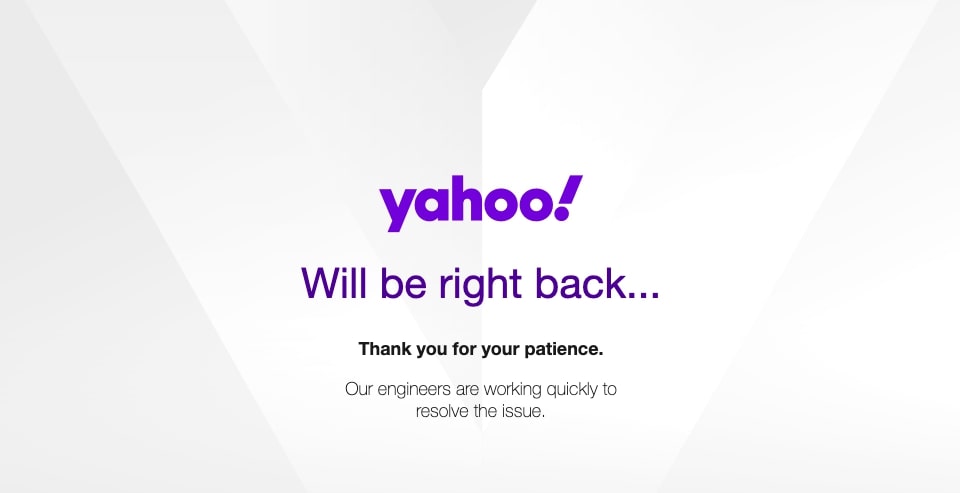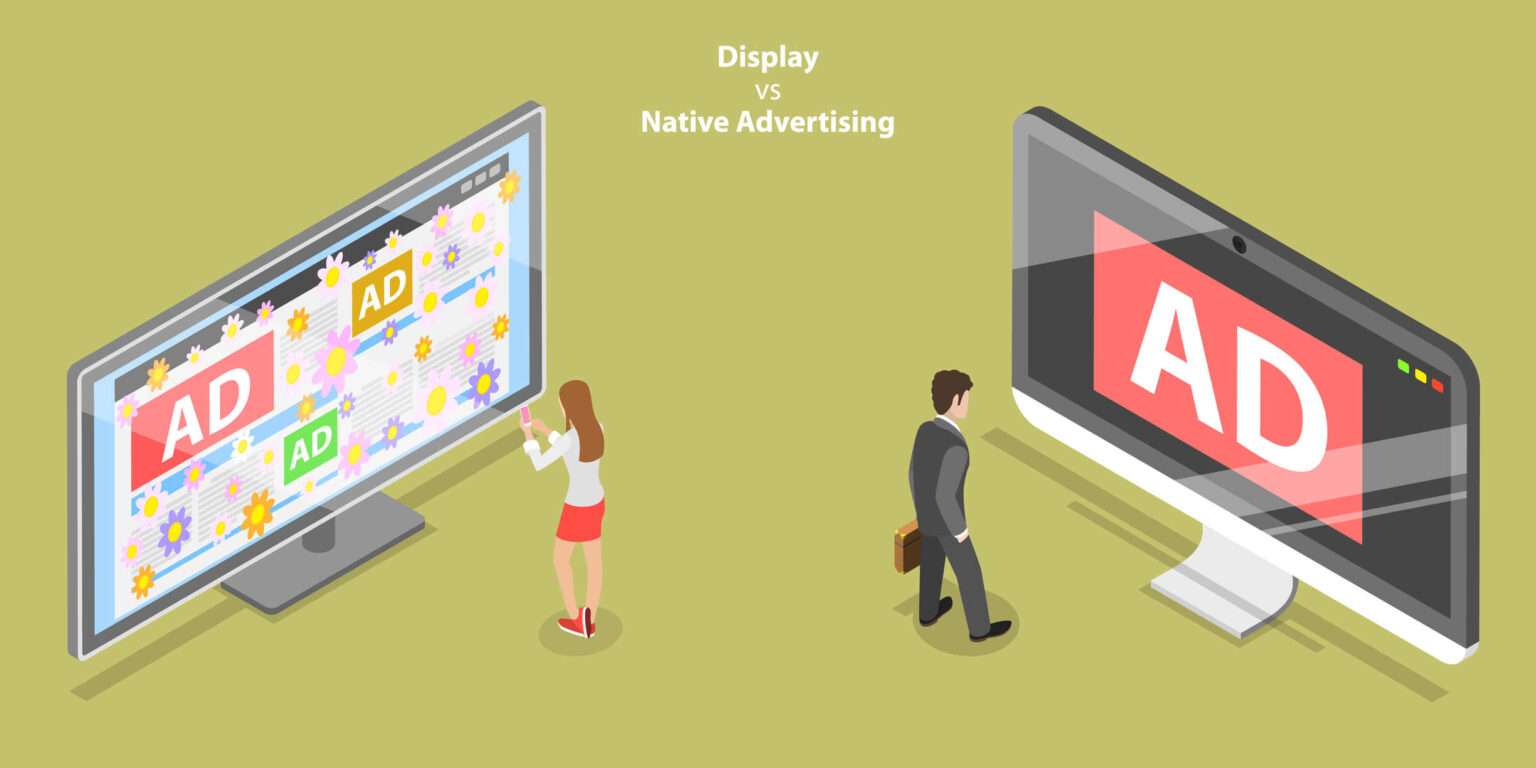Native Ads vs Display Ads: Detailed Comparison
Advertising has proved to be a powerful tactic for faster brand recognition and growth. It has been used for decades in the online world to improve traffic and generate more conversions than ever before! The online world is governed by native advertising vs display advertising. Knowing more information in depth is crucial to have an idea of their uses and reach. So, in this guide, we have extensively covered the difference between native ads vs display ads and when you can opt for any of them for the best online impact and better brand outreach.
So, without any further ado, let’s get started with both their basics and share detailed comparison and verdict at the end!
What are Native Ads?

Native Ads refer to the different types of ads which go with the brand style and design with a unique look and feel. It imitates organic content format which makes it seamlessly integrate with the site’s editorial style. Owing to its soft-selling approach, Native ads are used immersively to engage audiences and provide intensive user experiences.
While these ads don’t have any fixed format, you can find them embedded as clip ads, ad listings on Google, video ads and app install ads for faster reach. Their standard size may be 1,200px x 630px or 600px x 600px.
When To Opt For Native Advertising
When you want your user to perform some kind of action after clicking the ad, you must use native advertising. In this, you share some kind of link to be clicked after reading the ad. Check out the given scenarios that will help in understanding when you can put native advertising to its best use:
- Budget-crunch ads
Native advertising holds more CTR (Click-Through Rate) than display ads. Thus, between native ads vs display ads, native ads are much more budget-friendly and help in gaining more results.
- Easy campaign accountability
With efficient campaign performance management and tracking, conversions and accountability are easily tracked.
- Beyond Content campaigns
It helps your content marketing campaigns get a wider view and reach more like-minded people.
- Post-impression conversions
Native advertising focuses on providing a high-value to post-click experience. Thus, impressions help gather more reports of post-click experience that allows you to deliver exceptional sales results.
Native Ads Examples
From reading a content piece on a blog to signing up and making some purchases, these all include examples of native advertising.
- Search Engine Ads
Different native ads serve as branded ads and can be discovered on the top search results as paid search items.
- Social Media Ads
You can see several examples of native ads on the social media platform. Open your favorite social media platform and check the in-feed ads that will appear on your screen. These ads match the feel of the organic content and blend into the user’s content feed naturally. Different brands on Instagram use ads in stories that blend in with other followers’ stories and introduce their special offers, and products easily.
Native Ads Pros And Cons
Native ads are user-friendly and embed in the content easily. Have a look at the pros and cons of Native Ads below:
Pros
- Excellent User Experience
One of the major advantages of using native ads is that they integrate with the content and structure of the webpage seamlessly, which makes them less disruptive and more appealing to users. This further results in a better overall user experience.
- Improved Brand Perception
Well, with the correct and well-executed native ad campaign, you can improve the reputation and credibility of your brand among your target audience by offering valuable information through them.
- Higher Engagement
Native ads look like regular content. So, users are more likely to engage with them. They tend to receive higher click-through rates and increased interaction compared to traditional banner ads.
- Elevated Conversions
With native ads, you can achieve a higher conversion rate on your website. The ads providing valuable content and a clear call to action can lead to higher conversion rates compared to traditional ads.
- Relevance
Native ads can be targeted to match the interests and preferences of the audience, increasing their relevance and effectiveness.
Cons
- Complex Nature
Well, native ads need to match the feel and structure of the webpage. So, it is challenging to create these types of ads. Moreover, there are several factors to assess the overall performance of these ads, like clicks, views, impressions, etc., which makes the whole assessment process complex.
- Tedious Segmentation Process
With native ads, you have to target the audience and add a unique touch to your brand so that the ads can attract more traffic. This further increases the work of the marketers and campaign workers to gather relevant data and target ads according to them.
What are Display Ads?

Renowned as Google ads, these display ads appear as banner ads that have images hyperlinked to create brand awareness. It holds a standard size of 468 x 60 pixels. They usually have low CTRs, but they are extremely helpful in performance marketing, especially when retargeting campaigns.
Nowadays, these ads are more creative and complex with videos and interactive elements popping from here and there. They are super helpful in evoking purchase intent in the brand users and customers.
When To Opt For Display Advertising
If you are looking to enhance your campaign reach, Display advertising is your best bet. In this, you use bold colors and images to quickly capture user attention. Check out the below pointers to know in what scenarios you can use effective display advertising:
- Target niche audience:
Display ads work best when targeting a specific audience that has an interest in your products and services.
- Lower brand awareness:
When you are looking to increase your brand’s reach, you can use display ads to increase brand awareness and visibility for a solid first impression.
- Visual marketing message:
To create high visual impact like infographics, coupons etc., can work smoothly to showcase consumer products.
Display Ad Examples
Viewing ad banners in between blog content or on the side is a classic example of display ads.
- Ecommerce Sites
When surfing through different eCommerce sites, you must have checked different display ads while scrolling down the products.
- Blogging Sites
There are several ads displayed while reading some blogging sites. These ads include recently searched products on eCommerce sites or apps.
Display Ads Pros And Cons
Display ads are direct and provide straight-forward brand offers and details. Have a look at the pros and cons of Display ads below:
Pros
- Easy Set-Up Process
You can easily fit the display ads on your website as they come in a myriad of sizes and shapes. You can pick the required option and use it on your website without going through any unnecessary hassle.
- Better Flexibility
They come in several shapes and sizes, which makes their rates highly flexible. You can pin down the one that caters to your needs properly and fits your overall budget.
- Improved Engagement And Reach
Some display ads can be interactive or contain feature-rich media, encouraging users to engage with the content and brand. This elevates the overall engagement level of the brand with the visitors.
Moreover, they can reach a large and diverse audience, which makes them suitable for businesses looking to target a broad range of potential customers.
- Targeting Options
Another advantage of display ads is their wide arsenal of targeting options. Some modern and professional display advertising platforms offer several options, allowing advertisers to narrow down their audience based on demographics, interests, behavior, and several more factors.
- Quick Measurable Results
You can easily measure the performance of the display ads by analyzing different metrics associated with them. The advertising platforms offer proper analytics that you can leverage to get deep insights to improve your overall ad campaign and reap better results.
Cons
- Lower Visibility Due To Ad Fatigue
Display ads can become less effective over time if users repeatedly see the same or similar ads, leading to ad fatigue.
- Lower CTR
With the reduced visibility, the CTR of the display ads is lower as compared to other types of ads available in the advertising world.
- High Block Rate
According to the source, 42.7% of the population is using ad-blocking tools and software. With the increased usage of ad blockers, the ads are subjected to a high block rate which can significantly reduce the reach of the ads and impact their effectiveness.
- High Competition
There are tons of display ads available on the internet. So, you have to hire a professional who can create an attractive and eye-catching ad that does not mix with the whole crowd. Hiring a professional company can further add a burden to your overall budget.
Difference Between Native And Display Advertising
Now that you are well-aware of all the top points about using native and display ads, it’s time to understand the top differences between native and display advertising below.
| Serial No. | Native Ads | Display Ads |
| 1. | Native ads are static | Display ads are interactive |
| 2. | The ads don’t look like ads in the beginning | The ads look like ads from the beginning |
| 3. | These ads never cause disruption in the user interaction while exploring the webpage. | The ads cause disruption in the user interaction while exploring the webpage. |
| 4. | These ads blend with the overall format and layout of the webpage. The look and feel are similar to the content of the page. | These ads pop up on the webpage to promote the required products and services. The look and feel are designed to stand out from the whole page. |
| 5. | These ads offer high CTR. The average number lies close to 0.2% | These ads offer low CTR. The average number lies close to 0.05% |
| 6. | Offers better results on mobile | Offers better results on desktops |
| 7. | The native ads campaign generates high-quality traffic for your website | The display ads campaign generates low-quality traffic for your website |
| 8. | The cost per click is higher | The cost per click is lower |
Native Ads vs Display Ads: What Should You Choose?
With the rising popularity of ad blockers, native ads are gaining an edge over other forms as they are less obstructive and blend with the overall feel of the website. However, the display ads can attract customers with their fresh feel and stunning designs. In the debate of native ads vs display ads, choosing the type of ad depends on your brand’s needs and budget. You can go through the differences between both types and analyze their pros and cons. Besides this, you can leverage the power of both types to enjoy better growth of your brand in the online arena.










